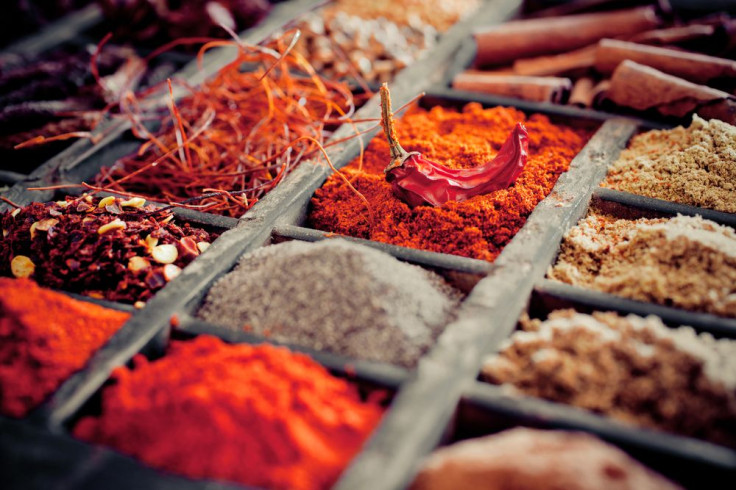Spice Contamination: 4 Of 10 Spices Hold Bacteria, Harmful Chemicals

Spices are a ubiquitous staple in every household pantry, and are widely referred to in cookbooks and television show recipes. But what exactly is in those spices? Research from Kansas State University in Olathe studied 10 different spices, and found four to contain contaminants that could be harmful to your health.
Following a recent report from the Food and Drug Administration (FDA), Patrick Williams, a research assistant professor at Kansas State Olathe, decided to study the food safety of spices. Williams found contaminants that could actually made you sick, which range from foodborne pathogens like salmonella, heavy metals, to micro-toxins, which are considered carcinogens.
“Our research has found that some of the spices we’ve purchased from farmers’ markets and bulk spice vendors are positive for Salmonella,” Williams said. “There are four spices that are typically associated with salmonella contamination: black pepper, thyme, oregano, and turmeric.”
The researchers studies spices that were purchased in bulk, like those sold at farmer’s markets, but not the individually packed spices sold in stores. The four spices most often contain these dangerous pathogens, while cinnamon and ginger samples tend to be free of any contamination.
“If you’ve been to a farmers’ market or bulk vendor where they have the spices out in barrels or boxes that don’t have lids on them, they are open to the public,” Williams said. “You can watch people put their hands in them and savor the spices, which means there is a high risk for contamination.”
Live and dead whole insects and insect parts; excrements from animals, and birds insects; human and animal hair, and other contaminants were found by the FDA. Williams noted that the health risk is only there if the spices are put into the food after it has been cooked. When spices are put into the food and then cooked, such as when adding black pepper to a potato before you bake it, the heat will eradicate any dangerous pathogens. Sprinkling on some pepper right before you take a bite is what researchers are worried about.
“The molds grow on the spices, and they leave behind toxins,” he said. “Many of these toxins, like aflatoxin, are considered to be carcinogens. Mycotoxins like ochratoxin may in fact be a carcinogen.”
The FDA recently released a “draft risk profile” in order to give a thorough overview of the known and possible dangers that spices can bring to our health. Their goal was to develop a profile on the different types of pathogens and filth that can be found in spices. It overviews spice outbreaks from 1973 to 2010; and an instance in which black pepper sickened over 100 people in Norway, all of whom were hospitalized, with one dying. Imagine dying after simply enhancing the taste of your meal by sprinkling a little "harmless" pepper on it? In another case, paprika sickened more than 1,000 people in Germany. In both cases, it was a strain of Salmonella, which has been infamously known to cause sickness from eating raw eggs.
“One aspect of this research that we find particularly intriguing is some spices that come from mostly India and Asia are contaminated with bacteria associated with soils,” Williams said. “There’s been concern that some spices are being irrigated with industrial wastewater. If that’s the case, the plants will take up these heavy metals, and they will ultimately end up in the spice product.”
Spices have been around since their embalming powers were discovered on Egyptian tombs as early as 3000 B.C. Many of the spices had strong connections or affiliations to different Gods. A document dating back to 1550 B.C. details information about using spices to practice surgery and medicine. The profound effect spices have on human history continue, even throughout the “Spice Wars” between the Portuguese, Dutch, and English thanks to the Queen’s desire for desserts with nutmeg. Nutmeg was quickly considered a miracle cure for the plague, however the miracle turned into a nightmare when it killed more than 35,000 people in London in 1603, according to The Spice House.
“If you use spices a lot at home and you’re cooking them, it should be fine,” Williams said. “If you’re going to use them on an item that’s already been prepared, sprinkling oregano on your pizza for example, I would tend to favor brands of spices that are prepackaged for you at your local grocery store.”



























